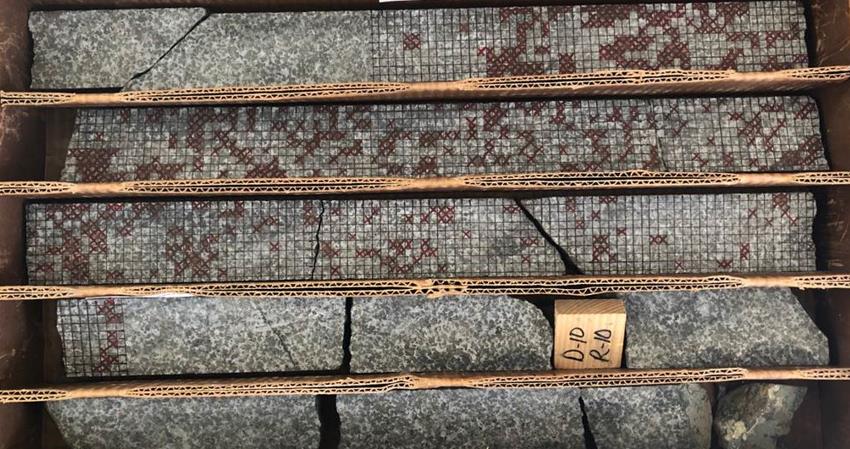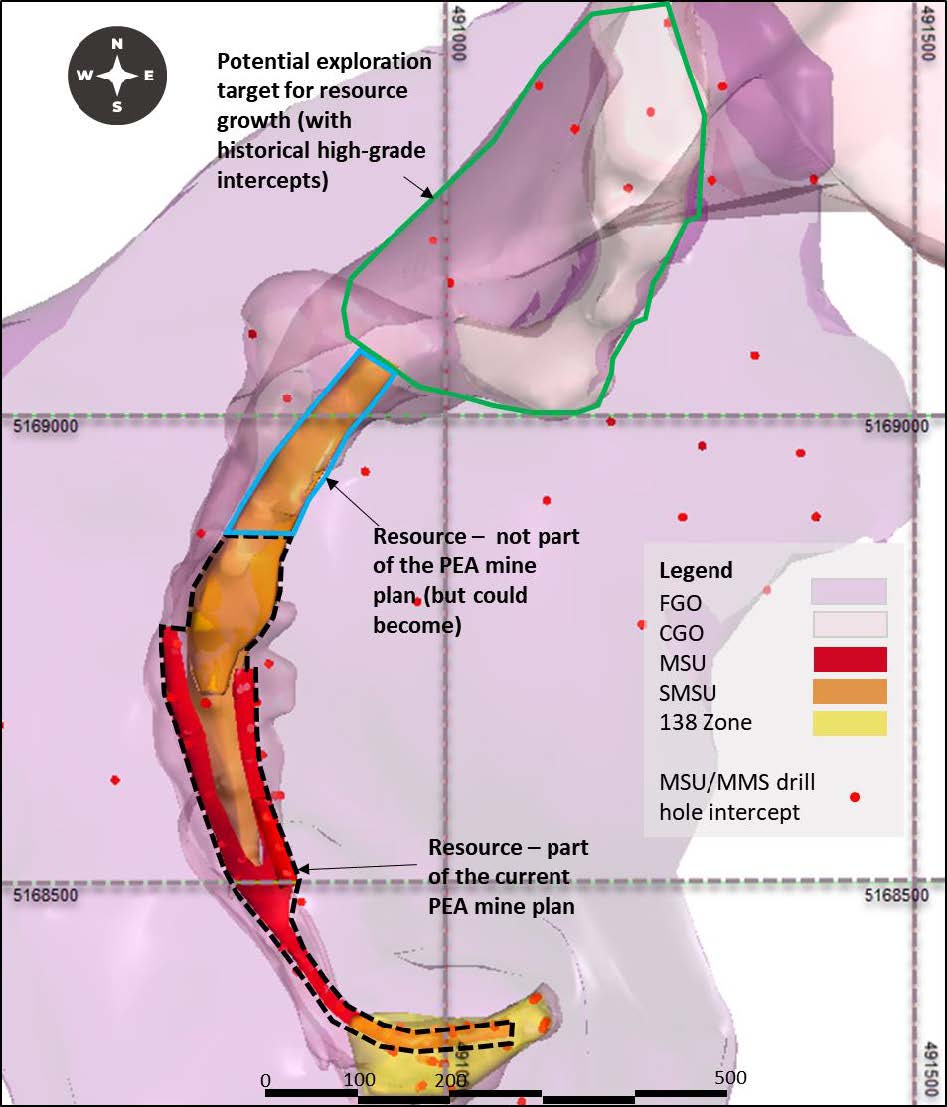MEDIA ADVISORY
News Release
TSX:TLO
TALON COMPLETES INITIAL PRE-CONCENTRATION TEST WORK AND INCREASES LOWER GRADE MINERALIZATION BY 107% TO 1.18% NICKEL
Road Town, British Virgin Islands (March 25, 2020) – Talon Metals Corp. (“Talon” or the “Company”) (TSX: TLO) is pleased to provide an update on the Tamarack Nickel-Copper-Cobalt project (“Tamarack Project”), located in Minnesota, USA. The Tamarack Project comprises the Tamarack North Project and the Tamarack South Project.
Highlights
- Through pre-concentration testing, Talon has successfully shown that nickel sulphide mineralization at the Tamarack Project that is currently below cut-off grade (i.e., below 0.7% Ni) can be upgraded to above cut-off
- The feed sample was upgraded from 0.57% nickel to 1.18% nickel (an increase in grade of 107%) in 32.8% of the mass. The overall nickel recovery was 70.6%, which translates to approximately 82% of nickel in sulphides recovery. The copper grade was increased from 0.36% Cu to 0.79% copper at 71.8%
- These results create an opportunity for the Company to include known exploration targets with low-grade sulphide mineralization (i.e., below 7% Ni) in future exploration programs, which could significantly increase the overall mineral resource at the Tamarack Project.
“The recoveries for nickel were particularly impressive considering that QEMSCAN mineralogical results indicate that only 85% of the nickel in the rock mass is associated with sulphides”, said Oliver Peters, Talon Metallurgist.
“We are planning to test a sample representative of disseminated mineralization north of the present mine plan documented in our updated PEA (see Figure 2 below). We plan to also conduct further geotechnical studies to investigate bulk mining methods.” said Henri van Rooyen, CEO of Talon. “If economic, our goal is to double the 8 year mine life as presented in our updated PEA”.
Description of Metallurgical Test Work
On May 9, 2019, Talon announced a test program for the removal of silicate minerals from the coarse-grained ortho-cumulative (“CGO”) intrusion prior to milling and flotation. The disseminated sulphides in the CGO tend to be relatively coarse and patchy in texture (see Figure 1 below). Heavy Liquid Separation (“HLS”) testing was therefore performed, which simulates Dense Media Separation (“DMS”). DMS is a proven, low-cost separation method that has been successfully used where there are adequate density differences between valuable and gangue minerals.

Figure 1: 1.5m sample interval, from 406m depth to 407.5m depth in drill hole 16TK0242, was broken down into a ¼” grid and marked where sulphide minerals were visually observed
The HLS tests were performed by SGS Lakefield, who is independent of the Company, at three different crush sizes of 12.7mm, 6.4mm, and 3.3 mm. A finer crush size generally improves mineral liberation but results in higher capital and operating costs for the required size reduction. Improved mineral liberation often translates into increased mass rejection and reduced metal losses.
The DMS process requires pre-screening of the crushed material at 850 microns to prevent media fouling. The fines were subjected to a rougher flotation test to evaluate the possibility of a further reduction of the mass recovery into the pre-concentrate.
Results of Test Work
The feed sample was upgraded from 0.57% Ni to 1.18% Ni (an increase in grade by 107%) in 32.8% of the mass. The overall Ni recovery was 70.6%, which translates to almost 82% of Ni sulphide recovery. The Cu grade was increased from 0.34% Cu to 0.79% Cu at 71.8% recovery.
QEMSCAN mineralogical results indicate that only 85% of the Ni contained in the CGO mineralization is recoverable as the remaining 15% of Ni is associated with non-sulphide gangue minerals such as serpentine or olivine. These gangue minerals are not recoverable by flotation.
Possible Impact on Future Exploration Programs
These preliminary results are encouraging since it was possible to upgrade CGO mineralization that fell below the mining cut-off grade to a pre-concentrate that graded well above the cut-off grade based on the current mine plan. Combined with bulk mining techniques, this creates an opportunity to include CGO targets in future exploration programs to increase the overall mineral resource as shown in Figure 2 below.

Figure 2: Tamarack North Project mineral zones: Looking down (plan view). A large area of CGO mineralization that could be considered for future exploration is outlined using a red dash line. Red dots are MSU and/or MMS intercepts. Potential minerlization depth extends from 300m depth in the south to 125m depth in the north. Coordinate are in NAD83 zone 15N.
Next Steps
Owing to these positive results, more comprehensive HLS tests and pilot scale DMS test have been incorporated into the scope of future metallurgical testing.
Quality Assurance, Quality Control and Qualified Persons
Please see the technical report entitled “NI 43-101 Technical Report Updated Preliminary Economic Assessment (PEA) of the Tamarack North Project – Tamarack, Minnesota” with an effective date of March 12, 2020 prepared by independent “Qualified Persons” (as that term is defined in National Instrument 43-101 (“NI 43-101”) Leslie Correia (Pr. Eng), Andre-Francois Gravel (P. Eng.), Tim Fletcher (P. Eng.), Daniel Gagnon (P. Eng.), David Ritchie (P. Eng.), Oliver Peters (P. Eng.), Christine Pint (P.G.) and Brian Thomas (P. Geo.) for information on the QA/QC, analytical and testing procedures at the Tamarack Project. Copies are available on the Company’s website (www.talonmetals.com) or on SEDAR at (www.sedar.com).
The locations and distances highlighted on all maps in this news release are approximate.
Mr. Oliver Peters, a Mineral Processing Engineer with Metpro Management Inc., is a Qualified Person within the meaning of NI 43-101. Mr. Peters is satisfied that the analytical and testing procedures used are standard industry operating procedures and methodologies, and he has reviewed, approved and verified the technical information disclosed in this news release, including sampling, analytical and test data underlying the technical information.
About Talon
Talon is a TSX-listed base metals company in a joint venture with Rio Tinto on the high-grade Tamarack Nickel-Copper-Cobalt Project located in Minnesota, USA, comprised of the Tamarack North Project and the Tamarack South Project. Talon has an earn-in to acquire up to 60% of the Tamarack Project. The Tamarack Project comprises a large land position (18km of strike length) with numerous high-grade intercepts outside the current resource area. Talon is focused on expanding its current high-grade nickel mineralization resource prepared in accordance with NI 43-101; identifying additional high-grade nickel mineralization; and developing a process to potentially produce nickel sulphates responsibly for batteries for the electric vehicles industry. Talon has a well-qualified exploration and mine management team with extensive experience in project management.
For additional information on Talon, please visit the Company’s website at www.talonmetals.com or contact:
Sean Werger
President
Talon Metals Corp.
Tel: (416) 361-9636 x102
Email: werger@talonmetals.com
Forward-Looking Statements
This news release contains certain “forward-looking statements”. All statements, other than statements of historical fact that address activities, events or developments that the Company believes, expects or anticipates will or may occur in the future are forward-looking statements. These forward-looking statements reflect the current expectations or beliefs of the Company based on information currently available to the Company. Such forward-looking statements include statements relating to the opportunity for the Company to include known exploration targets with low-grade sulphide mineralization in future exploration programs, which could significantly increase the overall mineral resource at the Tamarack Project; combined with bulk mining techniques, the opportunity to include CGO targets in future exploration programs to increase the overall mineral resource; the goal to more than double the 8 year mine life as presented in the Company’s updated PEA; the assertion that improved mineral liberation often translates into increased mass rejection and reduced metal losses; and the timing and results of the exploration program, including assay results, geophysical data processing and interpretation. Forward-looking statements are subject to significant risks and uncertainties and other factors that could cause the actual results to differ materially from those discussed in the forward-looking statements, and even if such actual results are realized or substantially realized, there can be no assurance that they will have the expected consequences to, or effects on the Company.
Any forward-looking statement speaks only as of the date on which it is made and, except as may be required by applicable securities laws, the Company disclaims any intent or obligation to update any forward-looking statement, whether as a result of new information, future events or results or otherwise. Although the Company believes that the assumptions inherent in the forward- looking statements are reasonable, forward-looking statements are not guarantees of future performance and accordingly undue reliance should not be put on such statements due to the inherent uncertainty therein.
